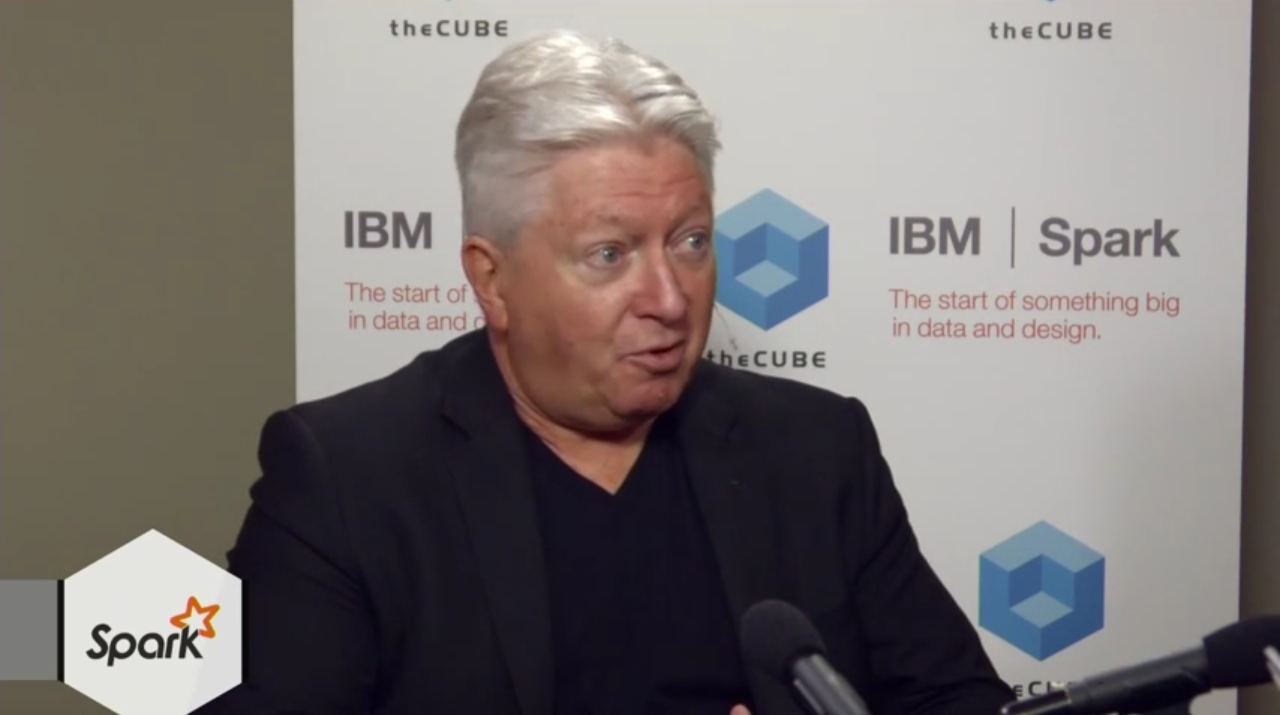 NEWS
NEWS
 NEWS
NEWS
 NEWS
NEWS
Rod Smith, IBM fellow, VP of IBM’s Emerging Internet Technologies organization, and the catalyst behind Spark believes that Spark is set to become the next Linux. He credits the platform’s growing popularity to its speed and flexibility.
“It’s time to value … that is going to attract audiences, because now they can show their business people what they can do for them,” Smith said. “That is what is really driving this.“
Spark opens the way for fast solutions and creative innovations by reducing the vendor standard for analytics from a week to four hours. With the old model, vendors solved customer problems by providing technology that was static, but customers now require flexibility.
Smith told theCUBE that IBM customers “were looking for technology that they could iterate on quickly, open-ended questions. It wasn’t the ‘give me a problem and do the compute piece output, I’m done.’ It was, ‘Oh gee, there’s the journey. I now see some interesting insights; I have some other questions.’”
By reducing the time involved, Spark has an immediate impact on the bottom line, meaning it gets CXO attention fast. Smith explained, “We haven’t had technology and the economics to be able to support it; now we do, and now you see the solution developer say, ‘I think I can make a business result faster.’ And if they can show it, then businesses react immediately.”
Watch the full interview below, and be sure to check out more of SiliconANGLE and theCUBE’s coverage of IBM Spark 2015.
Support our open free content by sharing and engaging with our content and community.
Where Technology Leaders Connect, Share Intelligence & Create Opportunities
SiliconANGLE Media is a recognized leader in digital media innovation serving innovative audiences and brands, bringing together cutting-edge technology, influential content, strategic insights and real-time audience engagement. As the parent company of SiliconANGLE, theCUBE Network, theCUBE Research, CUBE365, theCUBE AI and theCUBE SuperStudios — such as those established in Silicon Valley and the New York Stock Exchange (NYSE) — SiliconANGLE Media operates at the intersection of media, technology, and AI. .
Founded by tech visionaries John Furrier and Dave Vellante, SiliconANGLE Media has built a powerful ecosystem of industry-leading digital media brands, with a reach of 15+ million elite tech professionals. The company’s new, proprietary theCUBE AI Video cloud is breaking ground in audience interaction, leveraging theCUBEai.com neural network to help technology companies make data-driven decisions and stay at the forefront of industry conversations.